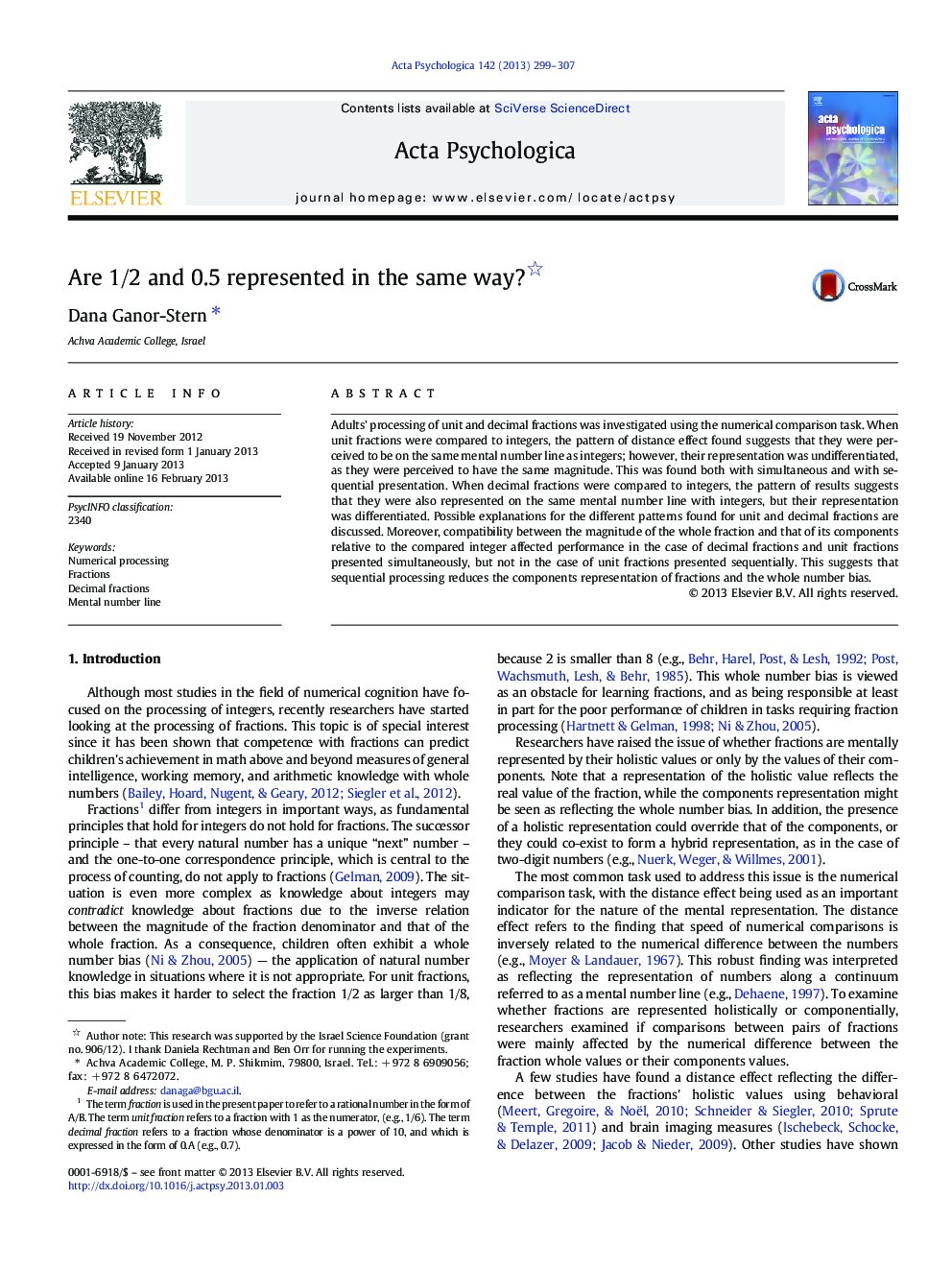| Article ID | Journal | Published Year | Pages | File Type |
|---|---|---|---|---|
| 919812 | Acta Psychologica | 2013 | 9 Pages |
Adults' processing of unit and decimal fractions was investigated using the numerical comparison task. When unit fractions were compared to integers, the pattern of distance effect found suggests that they were perceived to be on the same mental number line as integers; however, their representation was undifferentiated, as they were perceived to have the same magnitude. This was found both with simultaneous and with sequential presentation. When decimal fractions were compared to integers, the pattern of results suggests that they were also represented on the same mental number line with integers, but their representation was differentiated. Possible explanations for the different patterns found for unit and decimal fractions are discussed. Moreover, compatibility between the magnitude of the whole fraction and that of its components relative to the compared integer affected performance in the case of decimal fractions and unit fractions presented simultaneously, but not in the case of unit fractions presented sequentially. This suggests that sequential processing reduces the components representation of fractions and the whole number bias.
► Integers-unit fractions comparisons were affected by integer, not fraction size. ► Integers-decimal fractions comparisons were affected by both sizes. ► Components of decimal and unit fractions represented in simultaneous presentation. ► No components representation of unit fractions in sequential presentation.
